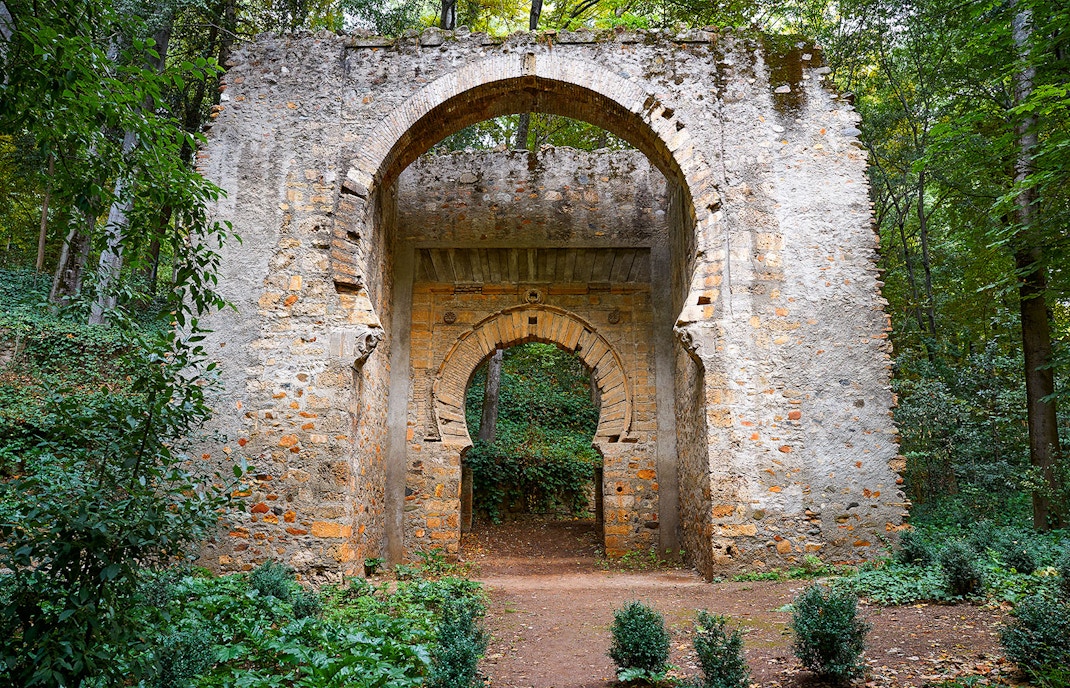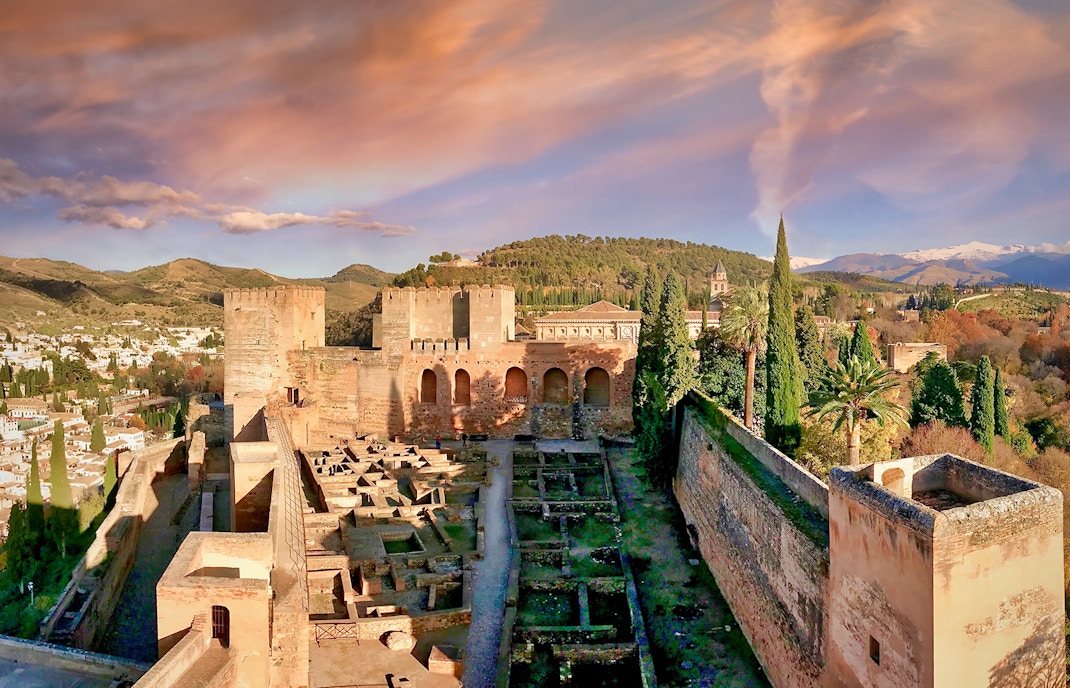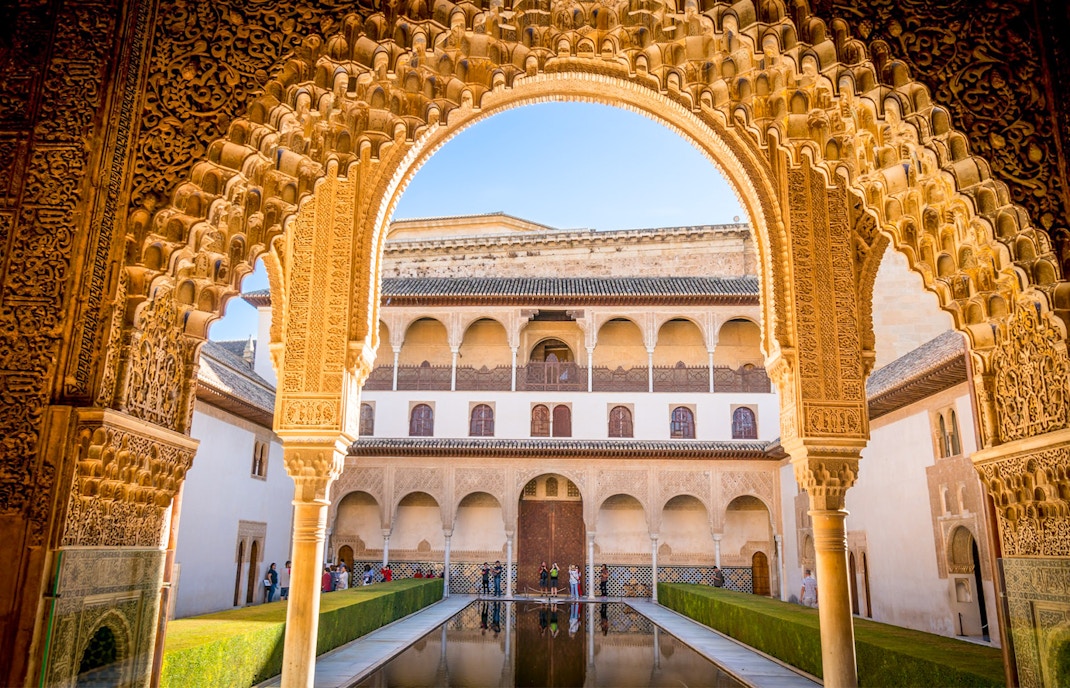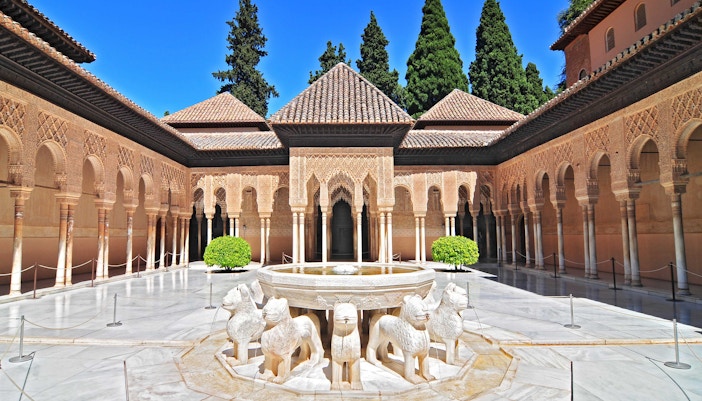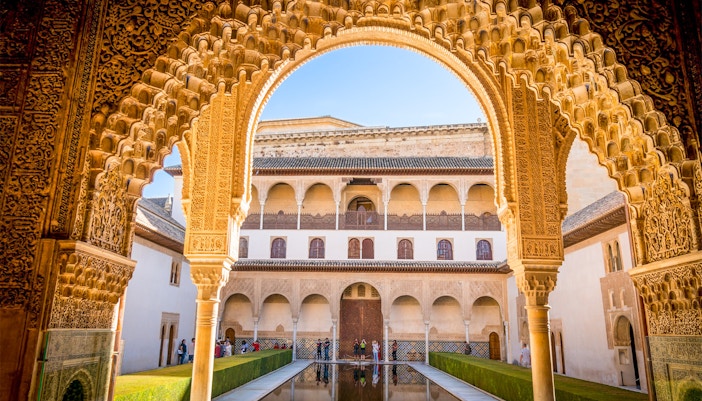The building features a striking door that has functioned as the primary access to the Alhambra since the 14th century from the San Pedro forest. Puerta de las Armas is one of the main buildings of the Alcazaba and takes up the entire lower level. Situated on the outer perimeter wall of the Alcazaba, this gate facilitated the passage of troops, supplies, and visitors between the city and the interior of the Alhambra complex.

